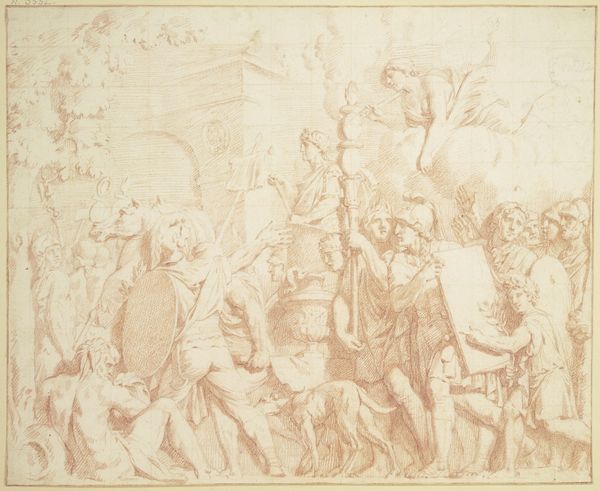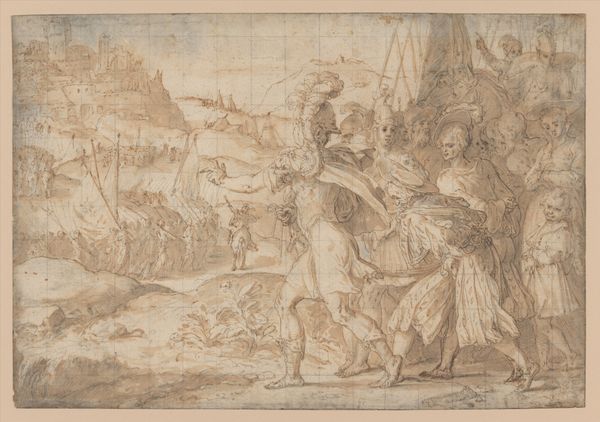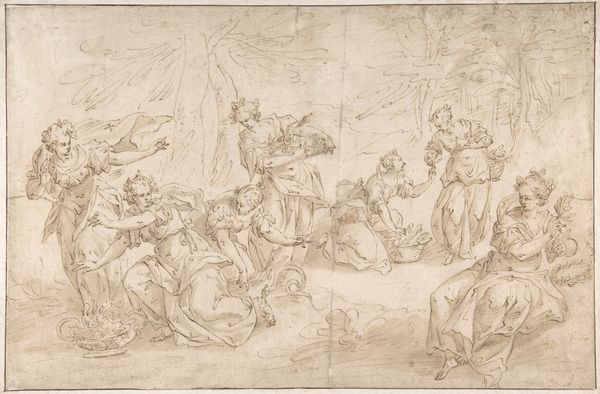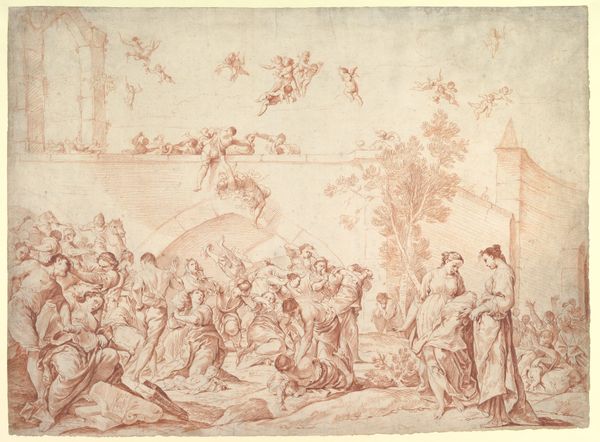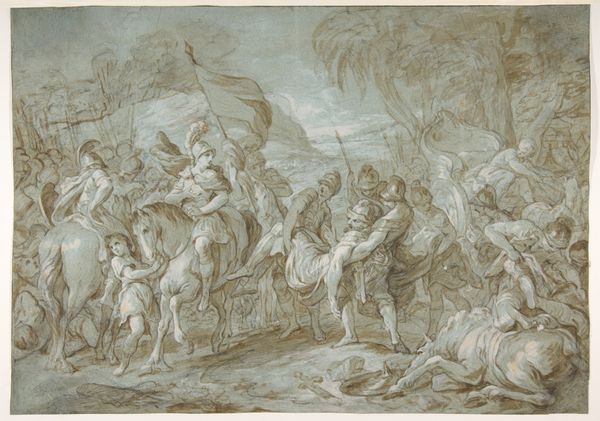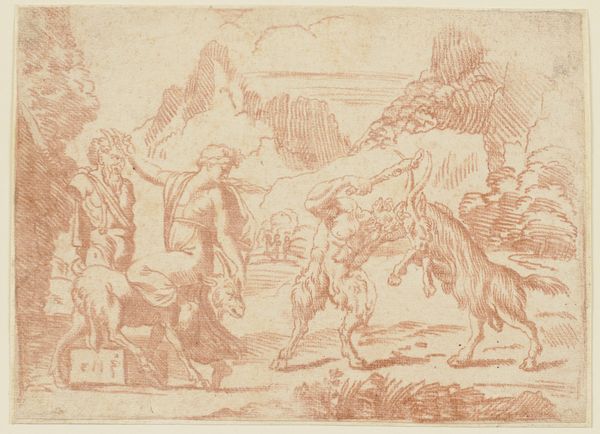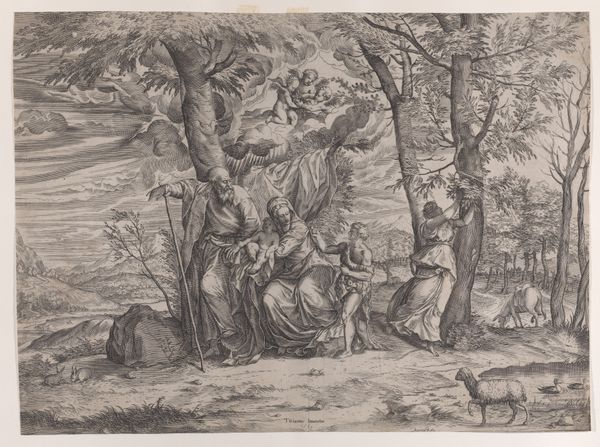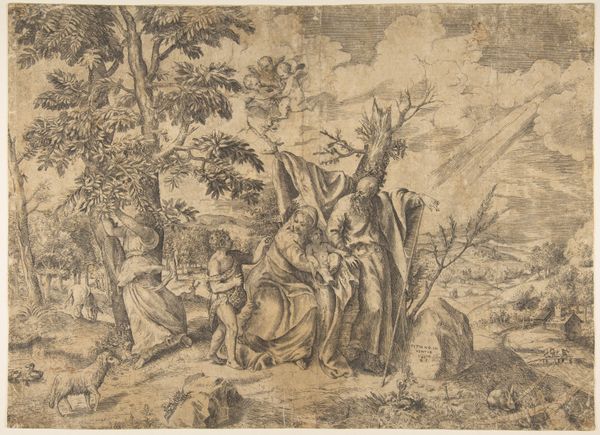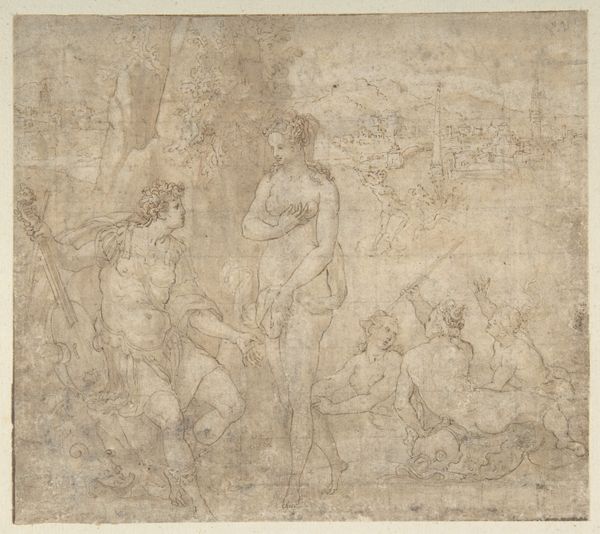
drawing, print, ink, charcoal
#
portrait
#
drawing
#
self-portrait
#
ink painting
# print
#
landscape
#
charcoal drawing
#
mannerism
#
figuration
#
11_renaissance
#
ink
#
underpainting
#
horse
#
men
#
genre-painting
#
charcoal
#
history-painting
#
italian-renaissance
Dimensions: Sheet: 8 × 10 11/16 in. (20.3 × 27.2 cm)
Copyright: Public Domain
Curator: This is "A Hunting Party" by Jan van der Straet, dating back to somewhere between 1550 and 1570. It’s rendered in ink and charcoal. Editor: I notice the relatively muted color palette that gives it this antiquated almost sepia look, and I can't help but focus on the human figures within a chaotic landscape. What speaks to you most about this drawing? Curator: The interesting question to consider here is not about what the hunting party is doing, but *how* it was produced. The availability of materials like ink and charcoal, and their distribution networks, speaks volumes about the burgeoning market economy of the time. Editor: How so? Curator: Think about it. This wasn’t just any drawing. This was a design, most likely intended for a print. Stradanus was producing commodities, images for consumption by a growing audience with disposable income. Editor: So the art itself becomes a product, reflecting economic shifts? Curator: Exactly. The labor involved – from gathering materials to the artisan's skill – becomes part of a larger system. The finished product is secondary. The mode of production takes precedence. Editor: Fascinating. It reframes how we perceive artistic intention and labor during the Renaissance. I initially looked at it from the stylistic perspective, like mannerism but now it feels deeper, rooted in social history and industrial changes of the time. Curator: Precisely!
Comments
No comments
Be the first to comment and join the conversation on the ultimate creative platform.
